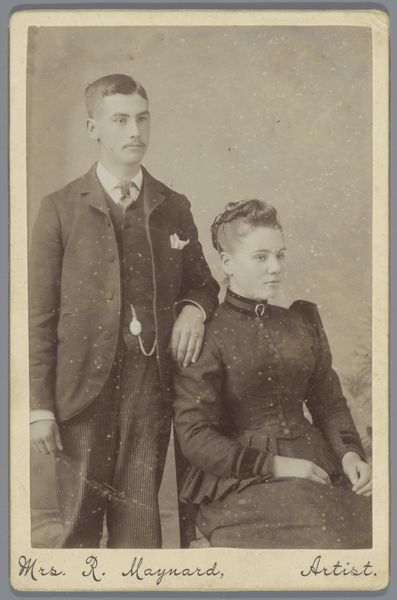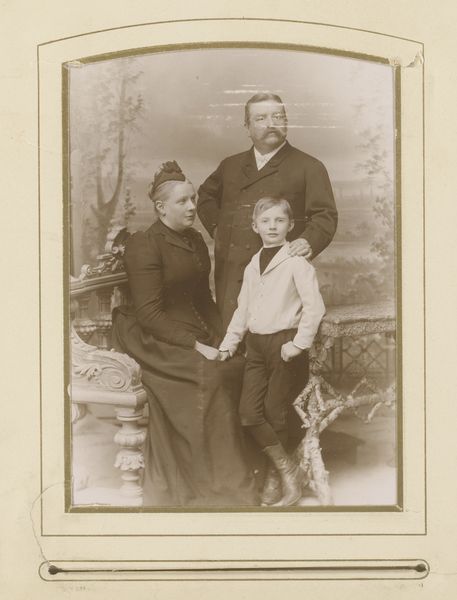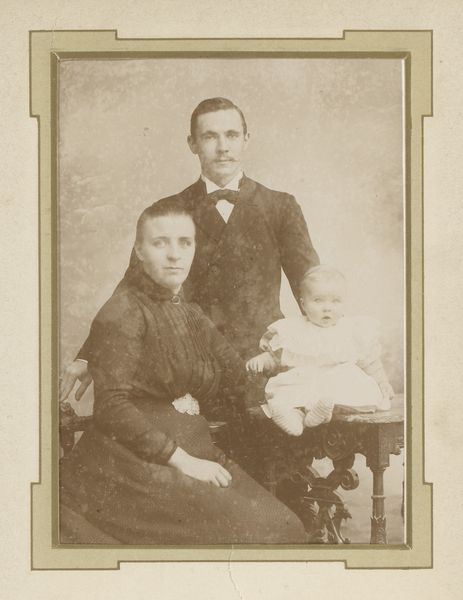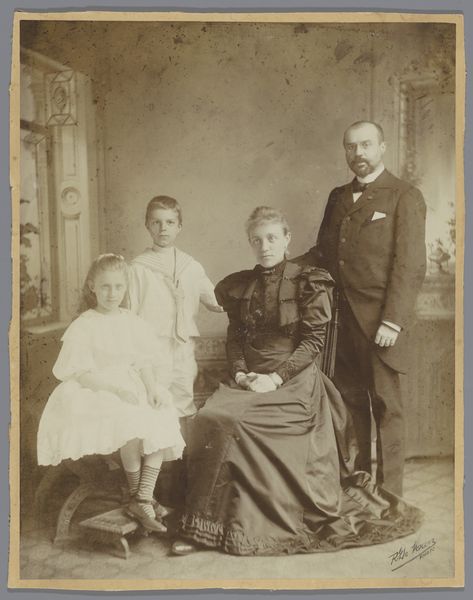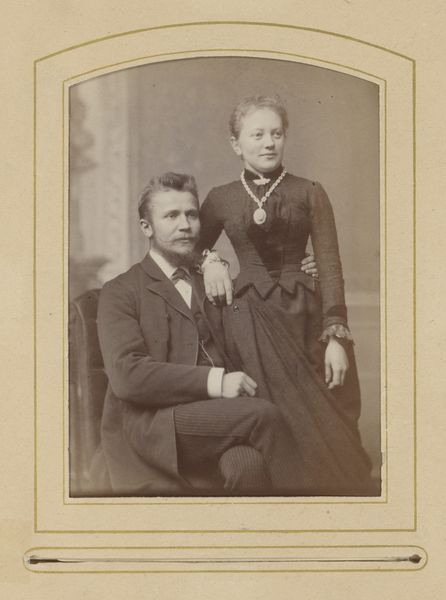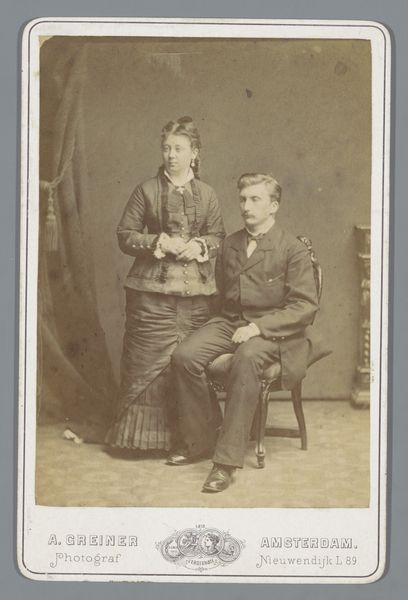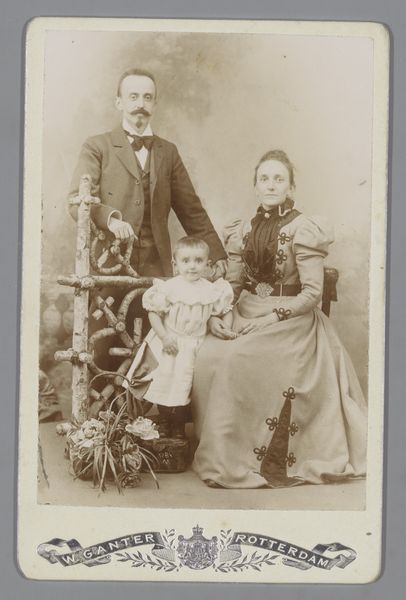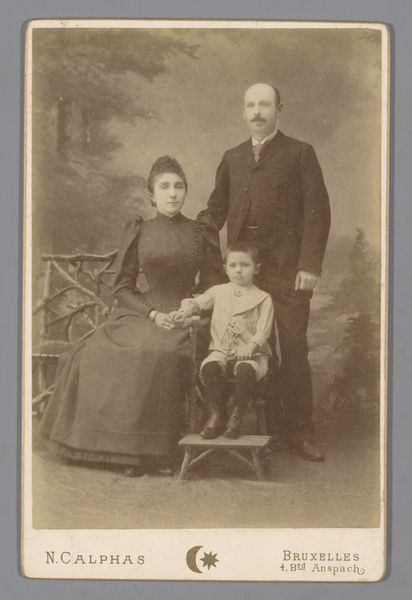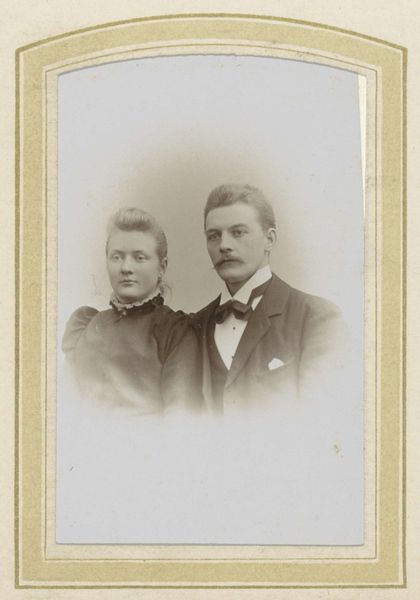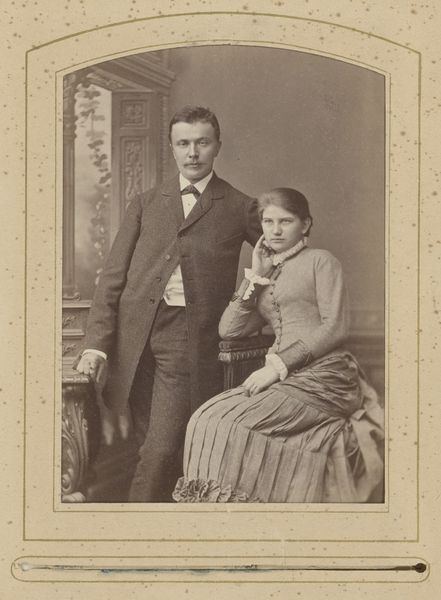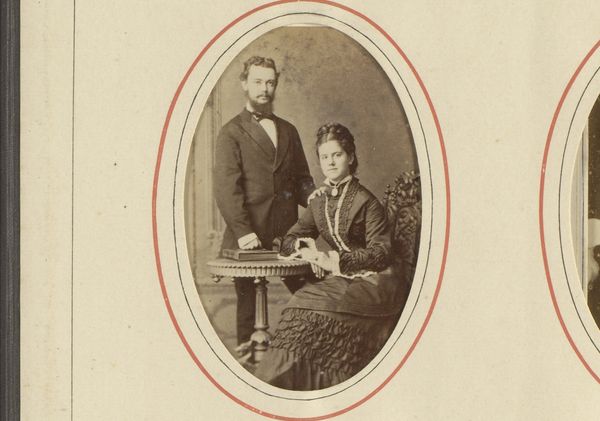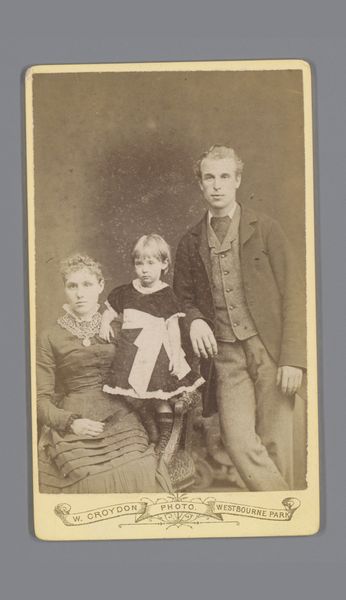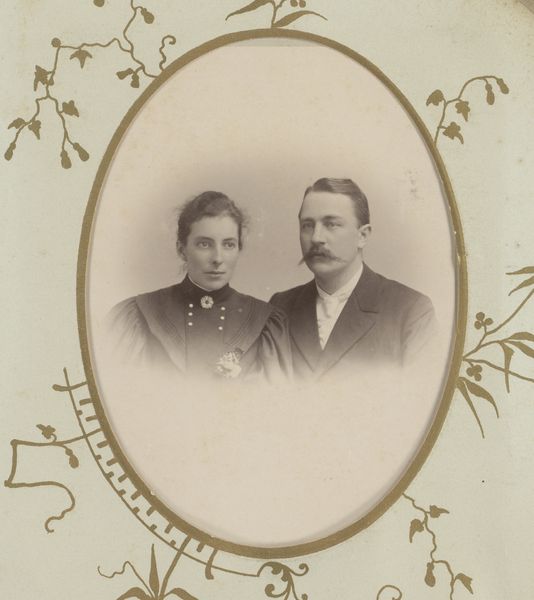
Familieportret van een staande man, een zittende vrouw en een baby 1877 - 1900
0:00
0:00
maxbuttinghausen
Rijksmuseum
photography, gelatin-silver-print
#
portrait
#
archive photography
#
photography
#
historical photography
#
gelatin-silver-print
#
realism
Dimensions: height 138 mm, width 97 mm
Copyright: Rijks Museum: Open Domain
Curator: This gelatin-silver print, "Familieportret van een staande man, een zittende vrouw en een baby," at the Rijksmuseum, captures a family group sometime between 1877 and 1900. Editor: Immediately, there's something deeply melancholic in the formality. It's striking, yet also strangely distant. All those dark hues. The almost austere setting and the faces of the subjects... it's heavy. Curator: It is, indeed. The technology of gelatin-silver printing made images reproducible. How this impacted self representation through professional portraits of that time is an important consideration here, allowing the growing middle class to emulate the self-fashioning of elites. The availability of this medium marked a significant shift in image-making. Editor: It's funny, the thought of photographic portraiture being more widespread gives off an aura of greater democracy somehow, but, looking at their faces, it doesn’t feel celebratory. Does the labor of making such a thing take something out of the picture? Or is the simple act of representing your likeness not just work but also weighty to those involved. It’s certainly present for those pictured, so somber...it has me pondering the true cost of a family photo! Curator: I see your point. We often perceive images like this solely in terms of content, what is depicted, but there is a tension to it all if we explore how such an image came to be. It allows us to read them as products shaped by specific techniques, choices, and economies, transforming an intimate, immediate event of family and time, to labor and product. Editor: Precisely! So while these images can show "a family", they speak just as loudly of the economics of portraiture itself. I feel less like a voyeur peering in, but more aware of what *I* bring to this image. The family posed, sure, but there’s also someone on the other side laboring. It adds a new dimension to the meaning of family. Curator: Indeed, recognizing the socio-economic background with photography in this way creates a different interpretive experience than say if it were a painting. It deepens our understanding of what it meant to capture an image in this historical context. Editor: Yes. It's far more than a stiff family moment frozen in sepia. Considering all we’ve discussed makes me want to re-imagine the lives surrounding the photo in richer, fuller color!
Comments
No comments
Be the first to comment and join the conversation on the ultimate creative platform.
